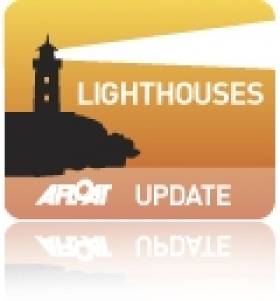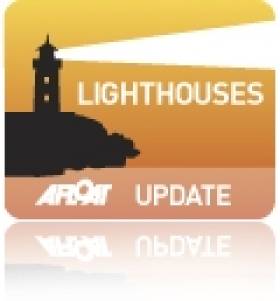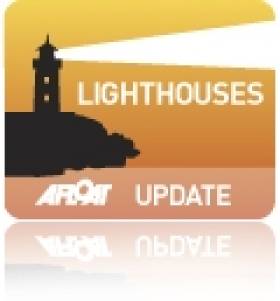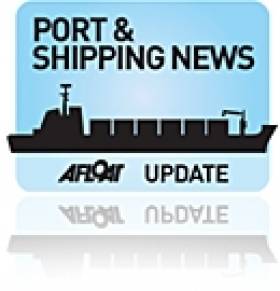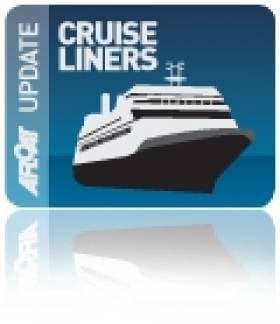Displaying items by tag: Loop Head Lighthouse
Loop Head Lighthouse at Mouth of Shannon Estuary to Get New Visitor Facilities with Clare County Council Planning Approval
Clare County Council has been granted planning approval to develop new visitor facilities at Loop Head Lighthouse Visitor Experience at the mouth of the Shannon Estuary in County Clare.
This proposed development will feature new visitor centre facilities, a Looped Walking Trail network, a new visitors’ carpark, the conservation of two Keeper’s Cottages, the installation of wayfinding signage, and the upgrade of the existing wastewater system.
Loop Head Lighthouse is one of two “Signature Discovery Points” in County Clare along the route of the Wild Atlantic Way, and is a landmark location on the Loop Head Heritage Trail. It is also one of 12 Great Lighthouses of Ireland. The lighthouse was converted to automatic operation in 1991 and was first opened to the public by Clare County Council and the Commissioner of Irish Lights in 2011.
Councillor Gabriel Keating, Leas Cathaoirleach of Clare County Council said the proposed development, which is subject to the necessary funding being secured, will generate “significant, positive dividends” for surrounding communities on Loop Head peninsula in terms of profile and the local economy.
“The focus on building a visitor attraction that is both sustainable and in keeping with the ethos of slow tourism is key,” added the Leas Cathaoirleach. “I am happy to see that sustainability is at the heart of the future plans for the site. I want to acknowledge the contribution of Loop Head Tourism, local landowners and the wider community as well as my own Council colleagues, particularly my fellow members of West Clare Municipal District (MD).”
 Loop Head Lighthouse in County Clare. Photo: AirSwing Media
Loop Head Lighthouse in County Clare. Photo: AirSwing Media
The Chief Executive of Clare County Council, Pat Dowling, stated that “Loop Head Lighthouse is one of Clare’s best known heritage attractions and has been the subject of considerable investment by the Department of Rural Community Development through RRDF funding as well as from Clare County Council in recent years. The proposed new development is subject to additional funding being secured and if successful, we are committed to delivering a project that will encourage the public to experience the rich heritage and history that stems from the lighthouse and the communities of the surrounding Peninsula.”
The approved development includes the construction of a single storey building extension providing additional and enhanced visitor facilities, including a reception area, entrance lobby, café with seating area, public toilets and a covered walkway leading to the Loop Head Looped Walking Trail. Featuring six designated viewing points, the trail network will guide visitors around the headland via four looped walking trails ranging from 0.9 kilometres to 4.5 kilometres in length.
A new visitor car park along the R487 Regional Road will provide new public car parking spaces, and bicycle and EV charging spaces. The new car park also will feature an access control kiosk building comprising a reception, entrance lobby, public toilets, and visitor information signage and orientation. The existing car parking area will be reconfigured to provide staff car parking spaces and bicycle spaces.
Clare County Council says vehicular, pedestrian and cyclist access to the site will be maintained via the R487 and will be enhanced by associated traffic calming measures and designated pedestrian and cycling priority zones.
The Visitor Centre at Loop Head has reopened for the 2024 tourist season. In addition, Loop Head Lighthouse Visitor Centre plans to open the newly refurbished Lighthouse Keepers Cottage as a self-catering accommodation offering for the Summer Season 2024.
This development is expected to bring in more tourists to County Clare, which will not only help the local economy but also strengthen the profile of the region. The focus on sustainability is commendable, and the commitment of Clare County Council to deliver a tourism product that the local community can be proud of is impressive.
An Bord Pleánala Approves Construction of Enhanced Visitor Experience at Loop Head Lighthouse
Irish Lights has welcomed the announcement of the approval by An Bord Pleánala for the construction of an enhanced visitor experience facilities at Loop Head Lighthouse in Co. Clare.
"We are delighted that approval has been granted for the enhancement of visitor facilities at Loop Head Lighthouse and we congratulate our Great Lighthouses of Ireland partner, Clare County Council," said Yvonne Shields O’ Connor, CEO of Irish Lights.
"This project aligns perfectly with our mission to promote the rich maritime and lighthouse heritage of Ireland, north and south, and provide unforgettable experiences for visitors in a sustainable way. Anyone familiar with Loop Head will know what a unique setting it is and it’s great to see this project get the required approval. "
The Great Lighthouses of Ireland partnership across 17 lighthouse sites delivers 23 unique tourism experiences. The partnership is led by Irish Lights, who founded it in 2015, and is made up of public, private and community sector partners. It delivers an estimated €16.8m in economic benefit annually and supports over 400 direct and indirect jobs in coastal communities. It offers visitors the opportunity to stay at or visit a lighthouse and to enjoy experiences and tours based around the vicinity of the lighthouse.
The project's approval comes after extensive consultation and planning, with a focus on sustainability and conservation. To book your Great Lighthouses of Ireland adventure go to www.greatlighthouses.com
Limerick Clare Radio Club Contacts Lighthouses Across the Globe at Loop Head Lighthouse
Over the weekend, members of the Limerick Clare Amateur Radio Club gathered at Loop Head Lighthouse on the Shannon Estuary for the 26th annual International Lighthouse/Lightship Weekend.
The club made contact with lighthouses and lightships from around the world, including in Japan and Australia. Visitors to the lighthouse were able to listen in to communications with amateur radio stations across the globe during the 48-hour broadcast.
The event was a success, with positive feedback from visitors and a special QSL card designed to mark the occasion. Loop Head Lighthouse Experience is one of Ireland's 17 Great Lighthouses and a popular attraction in West Clare.
In Co. Clare the Loop Head Lighthouse Visitor Experience has swung open its doors for the first time in two years following a €1.2m upgrade.
Located at the mouth of the Shannon Estuary with its origins dating back to the 1670s, the lighthouse was first opened to visitors in 2011 and has since become one of West Clare’s most popular attractions. The lighthouse also is one of the Great Lighthouses of Ireland and is one of the county’s two Signature Discovery Points along the route of the Wild Atlantic Way.
Kitty Garvey whose late husband Brendan was the Loop Head’s final lightkeeper before the lighthouse was automated by the Commissioner of Irish Lights (CIL) in 1991, was among the special guests at Friday’s official opening.
A series of upgrade and renovation works have been completed at the Loop Head Visitor Experience as a result of funding received from the Department of Rural and Community Development through the Rural Regeneration and Development Fund (RRDF) with match funding from Clare County Council. The combined works have cost €1.2m.
Clare Echo has further coverage on the funding and works that has taken place at the coastal tourist attraction.
Fancy a Break in a Lighthouse?
#Lighthouses – Ever fancied a break staying in a lighthouse, away in some remote stretch of coastline, then look no further.
The Irish Landmark Trust, have five such lighthouse properties dotted around the coast in which the public can rent on self-catering basis.
Get to experience breath-taking views and stunning backdrops from these beautifully restored lighthouses. To view further details of each lighthouse and how to make a booking, click the links below.
Blackhead Lighthouse, Whitehead in Co. Antrim Lightkeepers House One AND Lightkeepers House Two
Galley Head Lighthouse, Clonakilty, Co Cork Lightkeepers House One AND Lightkeepers House Two
Loop Head Lighthouse, Kilbaha, Co. Clare
Wicklow Lighthouse, Dunbar Head, Co. Wicklow
For information about the role of the Irish Landmark Trust, whose remit is to save interesting and unusual 'landmark' properties throughout the island of Ireland, and to re-use them, once restored, as good quality self-catering holiday accommodation visit: http://www.irishlandmark.com/about/about-us.aspx
Taoiseach to Open Exhibition at Loop Head Lighthouse
#LOOP HEAD LIGHTHOUSE – An Taoiseach Enda Kenny is to officially open a new exhibition at the Loop Head Lighthouse and to launch the 2012 visitor season at the west Clare tourist attraction on 18th May.
The Clare Herald also reports that the Taoiseach's grandfather, James McGinley was a former keeper at the lighthouse (still in operation) which can date its origins back to the 1670s.
Clare County Council, along with Shannon Development, Loop Head Tourism and the Commissioners of Irish Lights, conducted a successful trial scheme in 2011 that resulted in an estimated 17,000 people visiting the landmark building. This year's season will see the visitor attraction open to the public from 19th May.
In addition the Irish Landmark Trust rents out a five-bed former lighthouse-keepers house. The property stands in the grounds of the navigation landmark located at the mouth of the Shannon Estuary.
Loop Head Lighthouse Will Open To Public in 2012
#LIGHTHOUSES - Loop Head Lighthouse in Co Clare, is set to re-open to the public later this year following a successful trial scheme last summer.
As The Irish Times reports, Clare County Council opened the lighthouse for an 11-week trial period last July with the support of the Commissioners of Irish Lights, Shannon Development and Loop Head Tourism.
Some 17,000 people took up the invitation to visit the 23-metre beacon, which is still in use as a navigational aid, as previously reported on Afloat.ie.
The consortium is now looking for consultants to help expand tourism the facility with an exhibition and interpretation plan.
Record Profits for Foynes Port as Tonnage Increases
The boost is revealed in the state-owned company's annual report which shows the facility made a bottom-line profit for the year of €1.1 million – a five-fold increase on 2009. Operating cash flows rose to €3 million, up from €2.7 million a year earlier. To read more click HERE.
Late last month the Co. Limerick port was busy particularly with the seasonal arrival of three cruise ships and all made within one week, for more click HERE. This Friday sees the return of one of those cruise-callers, the French-flagged Le Diamant which is on charter to operator Inter Cruises.
Loop Head: A Guiding Light for Foynes-Bound Cruise Calls
Her arrival will be followed by P&O Cruises latest addition Adonia on Saturday. With 710 berths the 30,000 tonnes vessel is the smallest of the seven-strong fleet which can accommodate between 1,800 and up to 3,100 passengers as in the case of the Azura. The 115,000 tonnes vessel departed Dublin Port this evening. Her first call to the port was last year (click HERE) and she is the largest cruise ship to call to the capital.
On Tuesday of next week the 9,000 tonnes Spirit of Adventure (cruises) marks the third cruise caller to Foynes. The port is along with five other terminals located throughout the country's largest estuary are operated by the Shannon Foynes Port Company (SFPC).
Incidentally Spirit of Adventure and Azura where two of another trio of cruise ships that visited the Port of Cork on Monday, with Holland America Line's 59,000 tonnes Rotterdam forming the third vessel. This was the first occasion that Cork has handled this number of cruise ships on a single day, bringing 7,000 passengers which set a new record for the port.
- Shannon Estuary
- Shannon Foynes Port Company
- P&O Cruises
- Loop Head
- Cruiseships
- lighthouses
- Dublin Port news
- Holland America Line
- Port of Cork News
- Le Diamant
- Cruiseliners
- Spirit of Adventure
- Shannon Estuary news
- Loop Head Lighthouse visitor centre
- Azura cruise ship
- Spirit of Adventure cruiseship
- Adonia cruiseship
- Rotterdam cruiseship
- Loop Head Lighthouse
- Shannon Estuary and River
- Shannon Estuary and River news
- Lighthouse news
- Irish cruise calls
- Irish ports of call
- Foynes Port


























